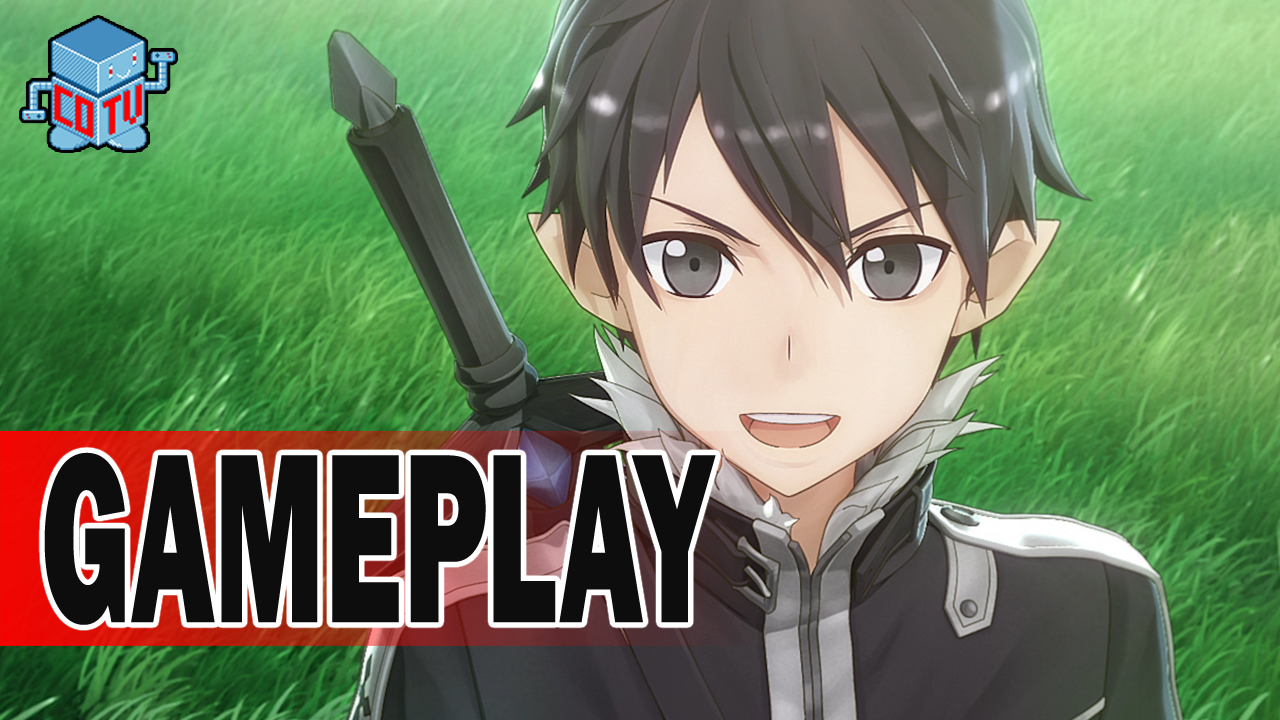Sword Art Online: Lost Song is a sequel of sorts to 2014’s Hollow Fragment on the PlayStation Vita and PlayStation 4. As with Hollow Fragment, Lost Song is set in the Sword Art Online universe and involves people using virtual reality to play in a Massively Multiplayer Online Role Playing Game. Playing as the anime’s main protagonist, Kirito, and his friends, you must explore dungeons, complete quests and uncover the truth behind Seven and her guild – Shamrock.
SAO: Lost Song’s story is a departure from that of the anime. Lost Song is set after the events of the main characters escaping Sword Art Online, but in Lost Song, Asuna is not captured and held in ALfheim Online (ALO). Kirito, Asuna and their friends, instead just decide to “try out the game.” This change in story and tempo was a bit of a turn-off for me as I am a fan of the anime, although the ALO side of the first season was not as good as the SAO beginning. All retconned story aside, the main thrust of Lost Song is about a genius idol in the game, named Seven, her retinue – a guild called Shamrock – and their attempts to clear Svart ALfheim by any measures necessary.
As a sort of sequel, Artdink did a commendable job in improving the combat system over that of Hollow Fragment. The addition of magic and a clear delineation of melee attack and skills versus being in magic delivery mode in order to use those skills makes combat more than just mashing buttons. This was a welcomed change, although in most cases, you’re still going to rely on using your weapons with a variety of pressing square and triangle and only mixing those up to break the monotony.
The best part about Lost Song is the flying mechanic. Although the camera always attempts to ruin the experience, the flying feels absolutely natural. You have the ability to free fly by pressing up on the D-pad, and at any time press right or left to hover or down to drop out of the sky. The combat works well with the flying as the game is forgiving on the hitbox detection if you are at a different altitude as that of your opponent. It is one of the best implementations of personal flight and battle I have played to date.
The developers made other improvements to the systems. They cut down the character interaction and usage. There are still over 20 characters you can interact with and use in your party, but that’s a far cry from the hundred plus individuals in Hollow Fragment. They have also simplified the weapons, gear and upgrade abilities into a more manageable system. All of the improvements are small, but noticeable in the overall experience.
My biggest complaint about Lost Song is just how uninspired it feels. The dungeons feel like they had no thought put into them. Oh, sometimes they put levers in the dungeon to open doors, but even then, it looks like they just put it in because someone said that you need to put an obstacle in the way. The monsters are not much better. There are essentially just 15 different monsters and they change the color to indicate the difficulty. Even when you are in town, most of the characters walking around are the same. Not similar, but exact replicates walking through town. Many times, it just appears like they did not make the effort.
Overall, Sword Art Online: Lost Song is a serviceable Japanese Role Playing Game that does not live up to its potential. Much of the game feels like they could have done more, but for lack of energy, time or money, decided against it. Fans of Sword Art Online will likely enjoy the romp through ALfheim Online, especially if they liked Hollow Fragment as the combat improvements and addition of flying mechanics make it worthwhile for those individuals. Otherwise, there are other options for Japanese Role Playing Games that would be better choices for most gamers.
